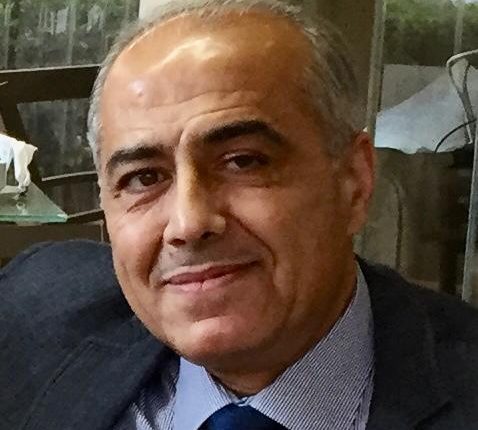THE BIDEN-PUTIN GENEVA SUMMIT UNDER APOSTOLIC CAREانا
*By General Monzer El Ayoubi
Translation: Dr Pierre A. Sarkis

Between the G7 summit meeting of the leaders of the US, Canada, France, Britain, Germany, Italy and Japan convening in their presence since last Friday over the course of three days ending yesterday Sunday, in the English city of Cornwall, and the meeting of the NATO (North Atlantic Treaty Organization) summit tomorrow Monday the 14th of June, in the European capital of Belgium, Brussels, the Swiss Capital Geneva is preparing to host the most important meeting the day after tomorrow Wednesday the 16th of June, between US President Joe Biden and his Russian counterpart Vladimir Putin.
In terms of form and substance, it could have been more feasible in principle for the summit, and for the accuracy of the first meeting between Biden and Putin and the effects of its results and the participatory pattern of its decisions, to convene ahead of the G7 and NATO summits. If the media and diplomatic sources consider the bilateral meeting to be peripheral to the two summits, then political reality states exactly the opposite. The margin in the language of adversity to shed a light takes on several meanings in its participants, he is the follower and not the followee, for example: on the fringe of the news or event, the marginalized individual, the spatial distance, the footnotes of books and texts known as endnotes, the spreads in prices and interests and budgets, etc…
On the other hand, and in parallel with this political and diplomatic quest to build a relationship of trust between the two presidents, and establish common threads to reduce the level of tension and verbal squabbling at least in the first phase, the cards in the sphere were throwing their weight on the meeting table starting with the maneuvers of the Russian Black Sea Fleet over the past month, and the Pentagon’s reversal of its decision to send two warships to that area, where Moscow has deployed considerable military forces near the border with Ukraine in retaliation to provocative moves around the conflict zone in Southeastern Ukraine, where NATO mobilized nearly 40000 troops and 15000 pieces of weaponry and military equipment, including strategic Airforce fighter planes near the borders with Russia. Last were the unprecedented naval maneuvers conducted by Moscow in the Pacific Ocean, which took on multiple dimensions in terms of location and time, and the nature of the participating forces under the leadership of Pacific Fleet Commander Admiral Sergei Avakyants, in a widespread spot defined in accordance with the maneuvers plans, involving tactical naval groups, in addition to more than twenty surface-to-surface ships carrying guided missiles, submarines and logistics ships 4000 km from their bases, with the participation of three squadrons of MIG 31-BM, along with a squadron of Tupolev TU 142 submarine hunters. According to the Russian Defense Ministry “the operations will focus on the control functions of an incoherent group of troops at a large distance from their bases, while protecting and defending peripheral maritime communications and navigation sea lanes, as well as, raising the level of interaction between the operational assembly of ships and aviation in the search and destruction of hostile submarines and ship concentrations.
In return to the G-7 summit which ends on Monday evening, and regardless of what is expected in regard to the adoption of most of its agenda items, funding the efforts to combat the Corona pandemic by providing nearly one billion doses of vaccines for poor countries remained the priority along with trying to revive the global economy, climate and global warming issues. The key item is the US response to China’s trade policy and the latter’s attempt to control the world economy and expand its markets, in coordination with the European Union, as economic and tax relations between Europe and China have taken prominent time for research and discussion.
In a related context, President Biden upon landing in Mildnhall British Royal Air Force Base, declared that “the world has changed completely and the US is back and democracies are joining hands to meet the most difficult challenges”, which underscores his adoption of the policy of strategic alliances in contrast to his predecessor President Trump, based on two axis: the first, to face the US-China trade war through the economic and trade alliance with Europe, in parallel with the military alliance by bringing life back to NATO, an alliance that President Trump had ignored criticizing its member states, particularly Germany, for unfairness or the poor level of their financial contributions commensurate with their respective capabilities. This will be translated tomorrow (today) at the summit held at NATO headquarters in Brussels, as well as, in the meeting held with British Prime Minister Boris Johnson and the one taking place tomorrow with Turkish President Recep Tayyip Erdogan.
Next, in conjunction Summit, and with the US considering China its top strategic challenge and confronting it a top security and national priority, the Pentagon has adopted expanded directives to respond to what it describes as China’s “aggressive and coercive and destabilizing behavior in the region, particularly in the South China Sea, and the threats to Taiwan”, which means that the decisions and recommendations of the NATO Summit tomorrow will include practical or procedural steps that are in line with the challenges posed. In addition, relations between Moscow, Washington and the European Union are not at their best, as NATO Secretary General Jens Stoltenberg pre-empted the bilateral meeting by saying the summit will discuss “Russia’s hostile activities and threats arising from its plans to confront NATO.”
The Sino-Russian rapprochement has become enough motivation for both parties to enter a phase of a comprehensive strategic alliance, militarily and economically in a firm and clear response to the “dual track- defense and dialogue” approach adopted by the West and the US-European alliance, and thus, repelling the NATO threats. The pace of visits and meetings between officials of the two countries reflects the depth of the relationship, and the stability of the aims at reducing US exclusivity in ruling the globe. The next meeting in Geneva will be a milestone at a critical stage in relations between Washington and Moscow. It will address strategic stability and nuclear hibernate globally, as well as, bilateral files such as, the war in Ukraine, human rights violations, the hacking of the electronic networks of US infrastructure and the economy, cyberwarfare, US sanctions, etc… It will also cover developments, solutions or truces of the complex and interlocking axes of international and regional conflicts. As for the pre-prepared closing statement, it will inevitably carry a positive tone. However, body language and gestures will be deeper than reading between the lines, and the duration of the meeting would be an indication of the size of understandings, and from the principle of “the walls have ears”, the behind-the-scenes is of importance somewhere…
Finally, the historic 18th Century palace Villa La Grange (1864), where former Vatican Pope John Paul II lived in 1969, and held in its garden a mass attended by 70,000 thousand people, brings hopes that the Apostolic blessing, more general in its scope of “grace, love and peace”, still scented its surroundings enough to make the summit a success and alienate the ghosts of demons away…
Scholar in Security and Strategic Affairs
Beirut, 14/06/2021

